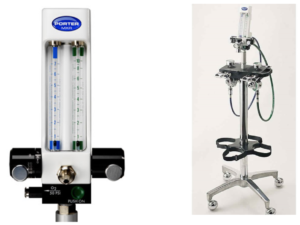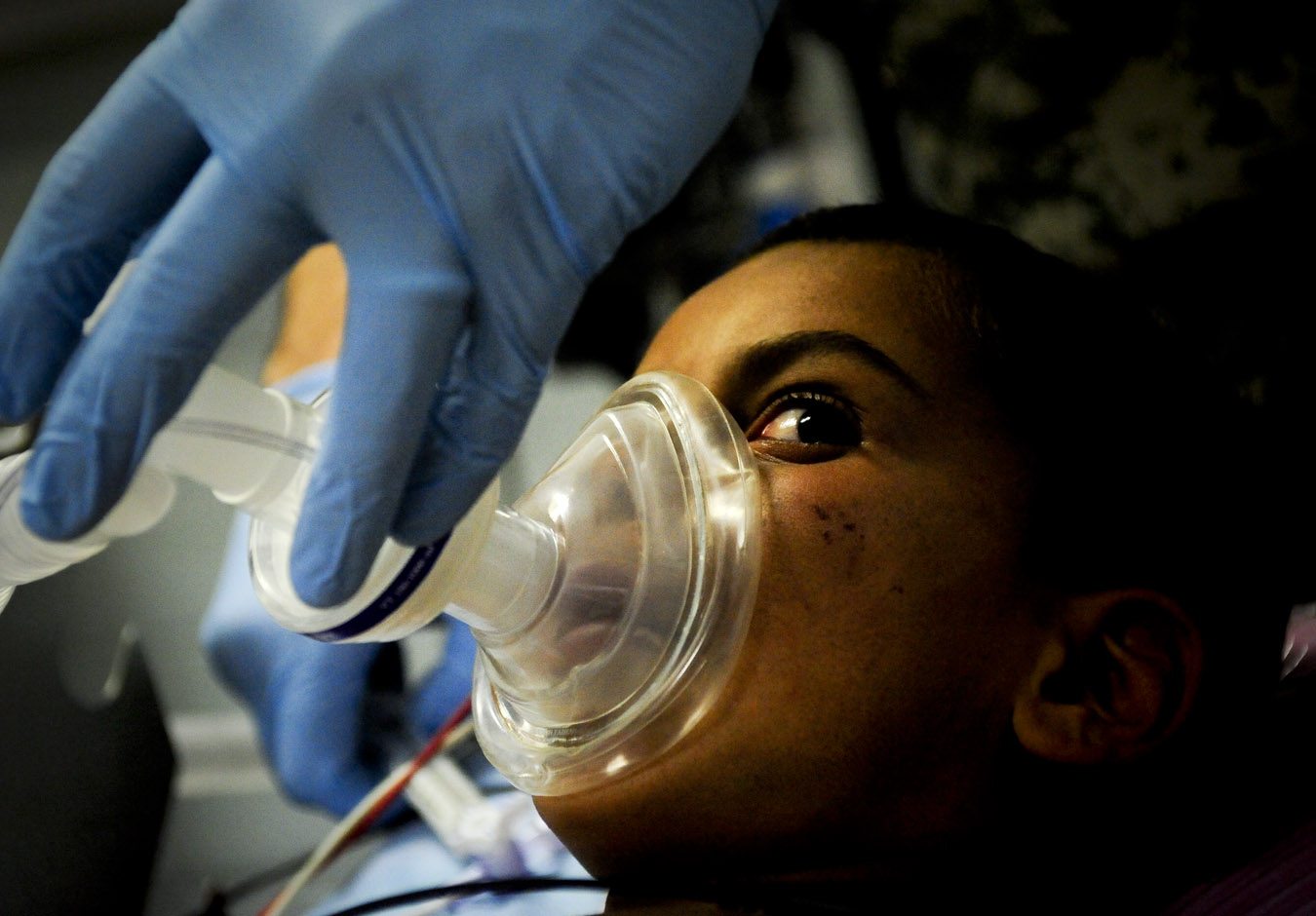Nitrous Oxide
Introduction to Nitrous in the ED
- Tasteless colorless gas administered in combination with oxygen
- Maximum concentration 70% N20
- Absorbed via pulmonary vasculature and does not combine with hemoglobin or other body tissues
- Rapid onset and elimination
- <60 seconds
- Analgesic and anxiolytic agent
- Use along with local anesthetic or other non-opioid pain medications
- Administered via facemask
- Only monitoring needed is pulse oximetry
- No NPO requirements, patient can drive after administration, no IV line needed, no RN necessary at bedside
- Nitrous is NOT procedural sedation and should be thought of as a pain medication
- Studies show it is similar to morphine 10 mg IM
- It works only when the patient is breathing it in and stops working immediately when the gas is off
Contraindications
- Severe COPD or asthma
- Active Otitis Media/Sinusitis
- Active Bowel Obstruction
- 1st -2nd trimester pregnancy
- Altered level of consciousness
- Severe Psychiatric disease
- EtOH
- Head Injury
- Complex Advanced Active Cardiac Disease
Indications (really any procedural pain)
- Laceration repair
- Incision & Drainage
- Wound Care
- Foreign body removal
- Central Venous Access
- Peripheral venous access
- Fecal Disimpaction
- Adjunct for
- Dislocations
- Splinting
Nitrous as an adjunct
- If using nitrous to try and reduce a joint
- Use IN ketamine
- Intra-articular lidocaine
- Concomitant admin of nitrous with opioids, benzos, or propofol is considered PSA
- If giving an IV opioid you should wait 30-45 minutes before using nitrous to avoid excessive sedation or airway issues
What do we have?

Porter Standard Flowmeter
- Stored in the trauma bay
- Extra tank rack across from peds resus bed
- Must use disposable breathing circuit
- Located next to desk in trauma bay
- There are adults small, youth medium, and peds small
Safety Features
- Nitrous oxide flow stops if oxygen is shut off or supply becomes limited
- Can never supply more than 70% nitrous oxide
- Exhaled gas is scavenged away to avoid unnecessary exposure to providers
Getting started
- Wheel to bedside
- Plug green oxygen tube into oxygen port in the wall (may have to remove Christmas tree)
- The gray tube scavenging tube plug into to the suction port in the wall
- Breathing circuit only fits one way, push big lumen tube into top (by gray bag) and the clear little tube below breathing bag
Positioning
- Position the patient comfortably
- Bring unit close to the patient so you can reach the dials
- Make sure pulse oximetry is connected and you can see the waveform
- Once the mask is on…
- Set oxygen flow rate then titrate nitrous oxide to desired percentage
- Watch gray breathing bag as a guide to adjust flow (titrate flow)
- If bag is fully collapsing, increase overall flow
- If bag is not moving, decrease overall flow
- Once nitrous oxide percentage is set, regardless of flow rate, percentage stays the same
During The Procedure
- Titrate nitrous oxide up and down as needed for “desired analgesia”, watch breathing bag to determine overall flow
- Once procedure is complete, turn off nitrous oxide, allow patient to breath oxygen only for 60 seconds
- Continue to watch breathing bag
- Then remove mask completely
Your Done!!
- Patient can be discharged with no driving or work restrictions
- Throw away the breathing circuit
- Return it to the trauma bay
REFERENCES:
- Becker 2008
- Babl 2015
- Zhang 1999
- Champman 1979
- Jastek 1991
Special thanks to Dr. Alexis LaPietra for her contribution! Watch out for next times pain pearls…….. Haldol as an analgesic!!!
